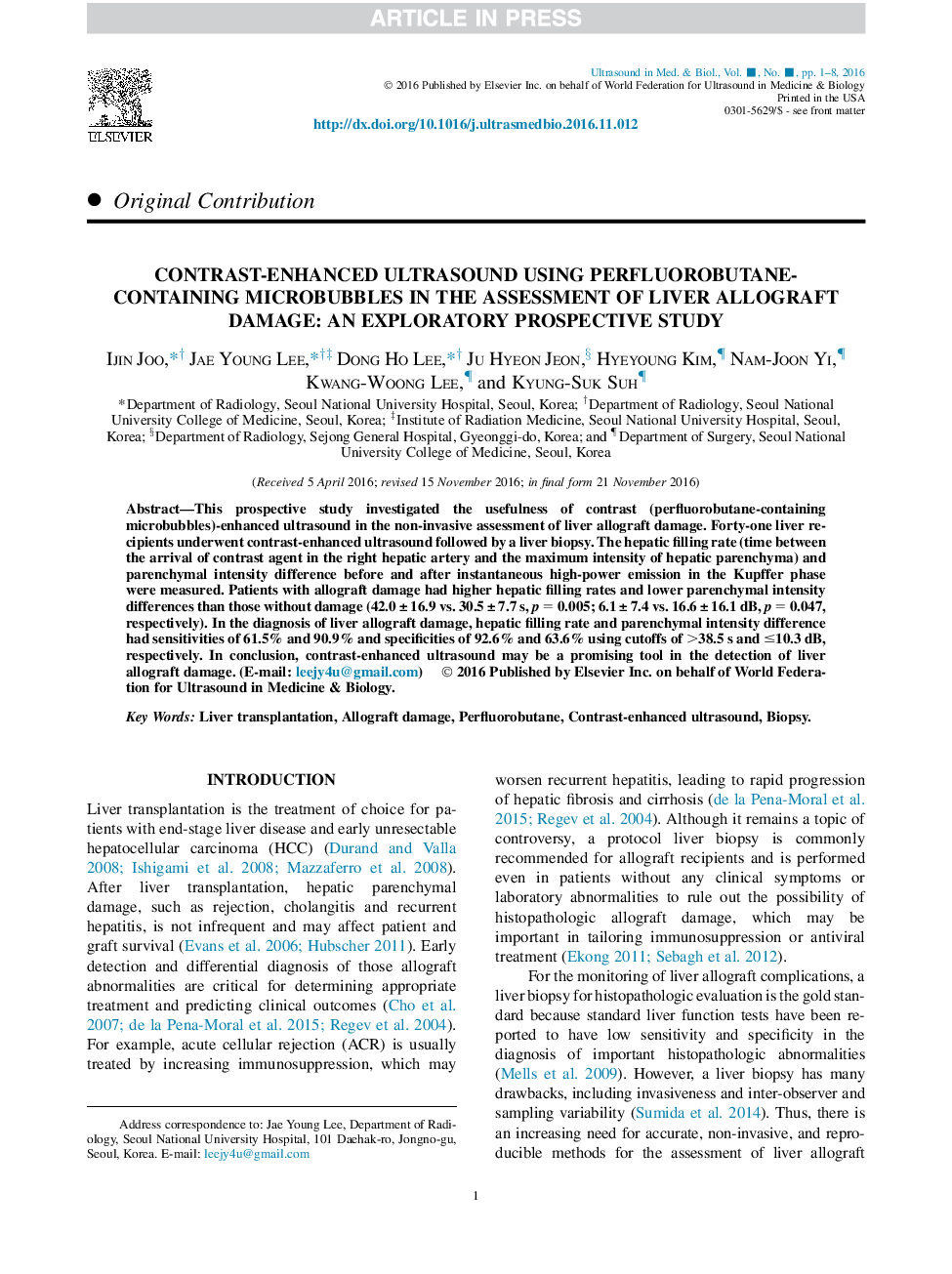| Article ID | Journal | Published Year | Pages | File Type |
|---|---|---|---|---|
| 5485727 | Ultrasound in Medicine & Biology | 2017 | 8 Pages |
Abstract
This prospective study investigated the usefulness of contrast (perfluorobutane-containing microbubbles)-enhanced ultrasound in the non-invasive assessment of liver allograft damage. Forty-one liver recipients underwent contrast-enhanced ultrasound followed by a liver biopsy. The hepatic filling rate (time between the arrival of contrast agent in the right hepatic artery and the maximum intensity of hepatic parenchyma) and parenchymal intensity difference before and after instantaneous high-power emission in the Kupffer phase were measured. Patients with allograft damage had higher hepatic filling rates and lower parenchymal intensity differences than those without damage (42.0 ± 16.9 vs. 30.5 ± 7.7 s, p = 0.005; 6.1 ± 7.4 vs. 16.6 ± 16.1 dB, p = 0.047, respectively). In the diagnosis of liver allograft damage, hepatic filling rate and parenchymal intensity difference had sensitivities of 61.5% and 90.9% and specificities of 92.6% and 63.6% using cutoffs of >38.5 s and â¤10.3 dB, respectively. In conclusion, contrast-enhanced ultrasound may be a promising tool in the detection of liver allograft damage.
Related Topics
Physical Sciences and Engineering
Physics and Astronomy
Acoustics and Ultrasonics
Authors
Ijin Joo, Jae Young Lee, Dong Ho Lee, Ju Hyeon Jeon, Hyeyoung Kim, Nam-Joon Yi, Kwang-Woong Lee, Kyung-Suk Suh,
